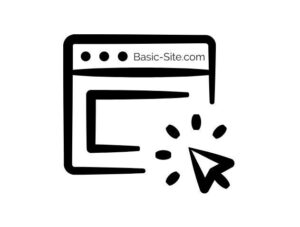
SEO, or Search Engine Optimization, is the art and science of making your website visible to search engines like Google. It involves understanding what people are searching for online and ensuring that your website appears prominently in those search results.
By optimizing your website’s content, structure, and technical elements, you can improve its chances of ranking higher and attracting more organic (non-paid) traffic. SEO helps you reach your target audience, increase online visibility, and drive relevant visitors to your website. It’s like having a map that guides search engines and users to discover and appreciate the value of your website.
SEO stands for Search Engine Optimization. It is the practice of optimizing a website or web page to improve its visibility and ranking in search engine results pages (SERPs). The main goal of SEO is to attract organic (non-paid) traffic from search engines like Google, Bing, and Yahoo.
Search engines use complex algorithms to determine the relevance and quality of websites in response to user queries. SEO techniques aim to align a website’s content, structure, and technical aspects with these algorithms to improve its chances of ranking higher in search results.
Search Engine Optimization
SEO involves various strategies and tactics, including: 1) Keyword research: Identifying and targeting specific keywords or phrases that users are likely to search for when looking for relevant information or products. 2) On-page optimization: Optimizing individual web pages by creating high-quality content, using relevant keywords in titles, headings, and body text, and optimizing meta tags, URLs, and image alt tags. 3) Off-page optimization: Building high-quality backlinks from other reputable websites, which can improve a website's authority and credibility in the eyes of search engines. 4) Technical optimization: Ensuring that a website's technical aspects, such as site speed, mobile-friendliness, crawlability, and indexability, are optimized for search engines. 5) User experience optimization: Enhancing the overall user experience on a website, including easy navigation, intuitive design, fast loading times, and mobile responsiveness. 6) Content creation and optimization: Creating valuable, informative, and engaging content that satisfies user intent and attracts natural links and social shares. 7) Local SEO (for businesses targeting local customers): Optimizing a website to appear in local search results and directories, including Google My Business.
Website Traffic Improvement
By implementing effective SEO strategies, websites can improve their visibility in search results, drive more targeted organic traffic, and increase their chances of achieving their business goals, such as generating leads, increasing sales, or building brand awareness.
How would we summarize SEO for a beginner? SEO, or Search Engine Optimization, is the practice of improving a website’s visibility and ranking in search engine results. It involves optimizing the website’s content, structure, and technical aspects to align with search engine algorithms.
By researching and targeting relevant keywords, creating high-quality content, building reputable backlinks, and ensuring a positive user experience, SEO aims to attract organic traffic from search engines.
The goal is to increase a website’s chances of appearing higher in search results, ultimately driving more targeted visitors, generating leads, boosting sales, and building brand awareness. SEO is an essential digital marketing strategy for businesses seeking online success
